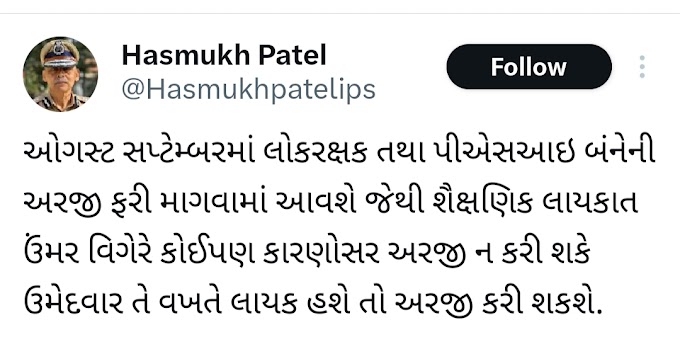What is a color pencil sketch?
Colored pencil techniques are similar to those of other drawing media, including hatching and crosshatching to create complex colors and tones on paper, and mastering how to build up color gradually while working with the white of the drawing surface, which is usually paper
Which Colour pencil is best for drawing?
The best coloured pencils for artists: USA
Shuttle Art Soft Core Color Pencil Set. ...
Magicfly Colored Pencils. ...
Castle Arts Coloured Pencils. ...
Arteza Colored Pencils. ...
Faber-Castell Polychromos Colour Pencils. ...
Derwent Coloursoft Colouring Pencils. ...
Monarch Premium Grade Black Widow Coloured Pencils.
Which Colour pencil is best for drawing?
The best coloured pencils for artists: USA
Shuttle Art Soft Core Color Pencil Set. ...
Magicfly Colored Pencils. ...
Castle Arts Coloured Pencils. ...
Arteza Colored Pencils. ...
Faber-Castell Polychromos Colour Pencils. ...
Derwent Coloursoft Colouring Pencils. ...
Monarch Premium Grade Black Widow Coloured Pencils.
Which pencil is used for Colouring?
Unlike graphite and charcoal pencils, colored pencils' cores are wax- or oil-based and contain varying proportions of pigments, additives, and binding agents. Water-soluble (watercolor) pencils and pastel pencils are also manufactured as well as colored cores for mechanical pencils.
ડોક્યુમેન્ટ ફાઈલ મોડેલ પેપર
Best pencils for drawing and sketching
Palomino Blackwing pencils. The best pencils for drawing overall. ...
Caran D'ache Graphite Line. ...
Lyra Rembrandt Art Design. ...
Derwent Graphic Medium pencils. ...
Cretacolor charcoal powder. ...
Derwent Lightfast Pencils. ...
Derwent Procolour pencils. ...
BIC Conté colouring pencils.
Unlike graphite and charcoal pencils, colored pencils' cores are wax- or oil-based and contain varying proportions of pigments, additives, and binding agents. Water-soluble (watercolor) pencils and pastel pencils are also manufactured as well as colored cores for mechanical pencils.
CHITRA,SANGEET, SHARIRIK SHIKSHAN MODEL PAPER DRAWING, MUSIC, PHYSICAL EDUCATION MODEL PAPER STD 3 TO 8
Music teacher training module Music means singing, playing and dancing, the basic physical form of music is sound. Creation originated from Nima, hence music is called Nadabrahma. Music has a great influence on human personality development. Music is essential for the holistic development of children. For the first time a teacher version of music (Std. 1 to 8) has been prepared. So this module has been prepared with the expectation that Shikshakmitri will get acquainted with it. No separate book for students has been prepared for this subject. But it has been indirectly included in all the subjects of the kingdom through songs, dances, acting. That is why the importance of this subject is exemplified in the songs, headdresses, acting songs, plays etc. that are included in the teacher's edition. Teacher friends can make better song rhymes using their own discretion. Each unit has been given appropriate songs as far as possible so that the children can understand each unit better and the basic purpose of enjoyable learning is achieved. It is important that children enjoy singing and enjoy the song.
Music has a huge impact on a child's personality development. Music is a resource that develops a child's heartbeat and holistic development. It is said that, without literature and music, human life is like an animal. "Music is the only way to assimilate a child's artistry. Purpose:
Music is a triune confluence of singing, playing and dancing, music is the only medium which provides an opportunity to bring out the dormant powers in the child. Music has a huge impact on a child's personality development. Music is a resource that develops a child's heartbeat and holistic development. It is said that "the life of a human being without literature and music is like an animal", "music" is the only way to assimilate a child's artistry. "Purpose: To develop the child's listening skills. To build the child's self-confidence. The children will learn braces, nursery rhymes and acting songs. The child's shyness, shyness and embarrassment will be removed. The children will enjoy the music. The child has a good habit of drawing. The child likes to come to school happily. The children get knowledge of various subjects while dancing and jumping. Listening skills of music. CD, cassette player will play) Singing: The teacher will play rhymes, nursery rhymes to the children frequently. He will rehearse it. The teacher will also present the children's stories through dramatization in the classroom and then the children will also present the dialogues with appropriate gestures, form dialogues.
The play will teach the children to make appropriate presentations through dramatization in the classroom based on the units in the textbook. Song - Music should be simple, easy and suitable for children's age. Selection of song according to the season, festival, occasion and theme should not be done. , Bradakshan is a model, so better songs can be done if the teacher has it, which can also be done in dialects that the children of the area can understand. National Anthem (Jana-Gana-Mana) Children are expected to listen to Ragin (Vande Mataram).
There are other objectives of physical education in the field of education. These include: promoting teamwork, building discipline, developing an attitude of respect for authority and rules, creating an environment of healthy competition, promoting leadership, inculcating self-demand in students, and inculcating values in them.
The main objective of physical education is to maintain the physical health of the student through physical activity. For this reason, the chair includes practice of various sports and performance of supplementary exercises.
These allow for the development of four physical valences, which are strength, speed, endurance and flexibility.
Strength is the ability of muscles to resist resistance. It can be isometric (if there is no displacement of an object) or isotonic (if there is displacement).
Speed is how fast you respond to a stimulus. It can be of three types: reaction speed, muscle contraction speed and displacement speed.
The speed of reaction is what happens when muscles respond to external stimuli.
The speed of contraction is the speed that occurs when muscles flex and stretch as fast as possible.
Finally, displacement speed is what happens when a person covers a certain distance in the shortest possible time.
Endurance is the ability to endure the fatigue produced by physical activity. Over time, the feeling of fatigue decreases, thus endurance increases.
Flexibility is a conditional ability that involves lengthening the muscles around the joints.
Many of the activities practiced in the physical education chair are group activities. For example, soccer, basketball and volleyball are two groups played against each other.
All of this promotes teamwork, as group members act as a unit. Each participant plays a role and together they form a system
Studying any sport or any physical activity instills discipline in the students. As a chairperson, physical education teaches individuals certain behavioral guidelines that make their performance in the group effective.
Through sports, physical education creates an environment of healthy competition. Students learn the importance of trying their best regardless of the outcome.
While the win is satisfactory, it is not wrong to lose unless the best effort is made.
Through sports, physical education creates an environment of healthy competition. Students learn the importance of trying their best regardless of the outcome.
While the win is satisfactory, it is not wrong to lose unless the best effort is made.
Soccer, basketball, volleyball teams, among others, have captains who guide the team and develop strategies to ensure the best performance of the group.
CHITRA 50 MARKS
SHARIRIK SHIKSHAN 50 MARKS
SANGEET 5O MARKS
This situation has been recreated in the chair of physical education. In this way, students are given the opportunity to develop their leadership qualities.
This will allow them to get to know their peers better, as the leader should be aware of the strengths and weaknesses of the people they lead.
STD 3 CHITRA
STD 4 CHITRA
STD 5 CHITRA
STD 6 CHITRA
STD 7 CHITRA
STD 8 CHITRA
In addition to discipline and respect, physical education provides other values. Initially, it teaches them to cooperate, as many games require group participation. This strengthens the bond of friendship.
Added to this, it gives students a sense of belonging, because they are part of a team. It creates a sense of responsibility in them, as everyone plays a role in the team and must fulfill their responsibilities.
STD 3 TO 5 CHITRA
STD 6 TO 8 CHITRA
They learn to be props. It is often necessary to come at certain times for certain sports practices. In addition, they learn that their movements are accurate.
CHITRA,SANGEET, SHARIRIK SHIKSHAN MODEL PAPER DRAWING, MUSIC, PHYSICAL EDUCATION MODEL PAPER STD 3 TO 8
SANGIT-KARYANUBHAV - 3 TO 5
SANGIT-KARYANUBHAV - 6 to 8
PHYSICAL EDUCATION - 3 to 5
PHYSICAL EDUCATION - 6 TO 8




